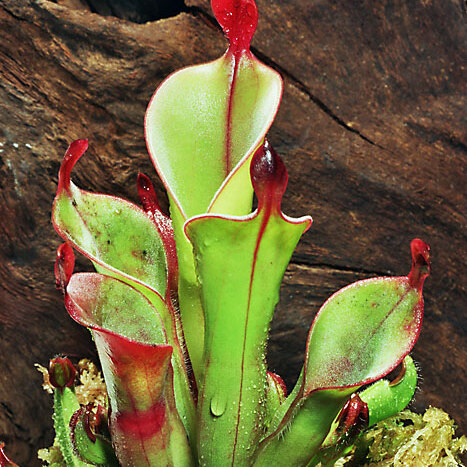Herbs, perennial, carnivorous, rhizomatous, sometimes stoloniferous. Stems absent. Leaves rosette-forming, alternate, developing into hollow tubes (pitchers); stipules absent; petiole clasping, dilated; blade green, yellow-green, reddish or purplish, often distinctly red, pink or green, purple-veined or-blotched, sometimes white-areolate, winged laterally along its length, usually prominently costate, surfaces of pitcher and hood (operculum) glabrous or hairy and minutely glandular; orifice with thickened, revolute rim; hoods variously arranged in association with orifices. Phyllodia present or absent. Scapes 1 or 2, bracteate, glabrous. Inflorescences are solitary flowers, arising from growing tip of rhizome. Flowers bisexual, nodding; perianth and androecium hypogynous; hypanthium absent; sepals 5; petals 5; stamens 15 or 50–100, distinct or slightly fascicled; anthers laterally dehiscent; pistils 1, 5-carpellate; ovary superior, 5-locular; placentation axile to parietal; ovules anatropous, bitegmic, tenuinucellate; styles 1, terminal; stigmas 5, distal. Fruit at capsule, globose to ovoid or obconic, shallowly 5-or 10-lobed, tuberculate, dehiscence loculicidal. Seeds 400–1000, irregularly clavate to reniform-obovate; endosperm copious, oily. For more detailed accounts see Stevens (2001), Kubitzki (2004) and Mellichamp (2009).

